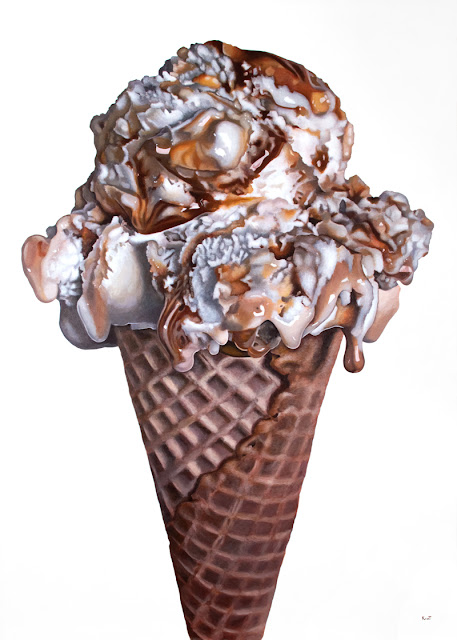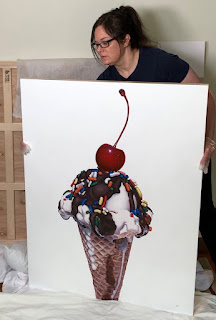How to Mix the Color Black in Acrylic Paint
 |
| "Dramatic Loaf of Bread," acrylic on panel, 8" x 10". |
Last week, I painted this 8"x 10" bread painting with a rich black background, so I thought I'd quickly share how I mix my "black" paints. First, let me say that there are many color mixing theories, so that doesn't necessarily mean my method is right as much as it's right for me. But maybe it will be right for you, too!
I don't actually have any true "black" paint tubes in my assortment of paints. Technically, I have one, but I have only used it for painting the sides of panels on occasion and not in the actual paintings. Many oil painters use a color theory called the "Munsell" color system, which in fact, incorporates black as a direct way of adjusting the various values of colors; when I painted in oil, I did this, but in acrylic, which I work in now, I find that it just doesn't adapt correctly, so I adjust my color values a little differently. But today, I'm just going to tell you how I mix my black colors for painting black areas in my pieces, not for adjusting the values of other colors in my paintings.
To create a simple "black" that has a richness that straight-from-the-tube blacks can't match, simply mix 1 part brown to 1 part blue. My favorite go-to blacks are 1 part raw umber to 1 part payne's gray or ultramarine blue. For lettering, I use 1 part raw umber to 1 part cobalt blue. For a warmer black, 1 part burnt umber to 1 part payne's gray or ultramarine blue. Sometimes you may need to adjust the ratio a bit, so be sure to paint it on a test surface before you put it straight on your painting surface. I keep a piece of matte white foam board on my easel behind my paintings as a test surface (and to stop the paintings from falling through!).
You can also complicate the colors a bit more by adding a tinge of another color, like Jenkin's green, but I have found I like the simpler formulas.
If you have worked in acrylics for any length of time, you've probably experienced "color shift" - when the color dries slightly darker than when it's wet. This is why it's hard to mix the same color twice. So instead, I mix all of my colors in a little condiment container with a lid. I like Diamond Daily mini cups because they are small, inexpensive, have a lid and are disposable. It gives me just the right amount of paint, and if I store the container in a ziploc bag, it will stay wet for up to a week, depending on the colors.
I hope this has helped a bit! Happy painting!

